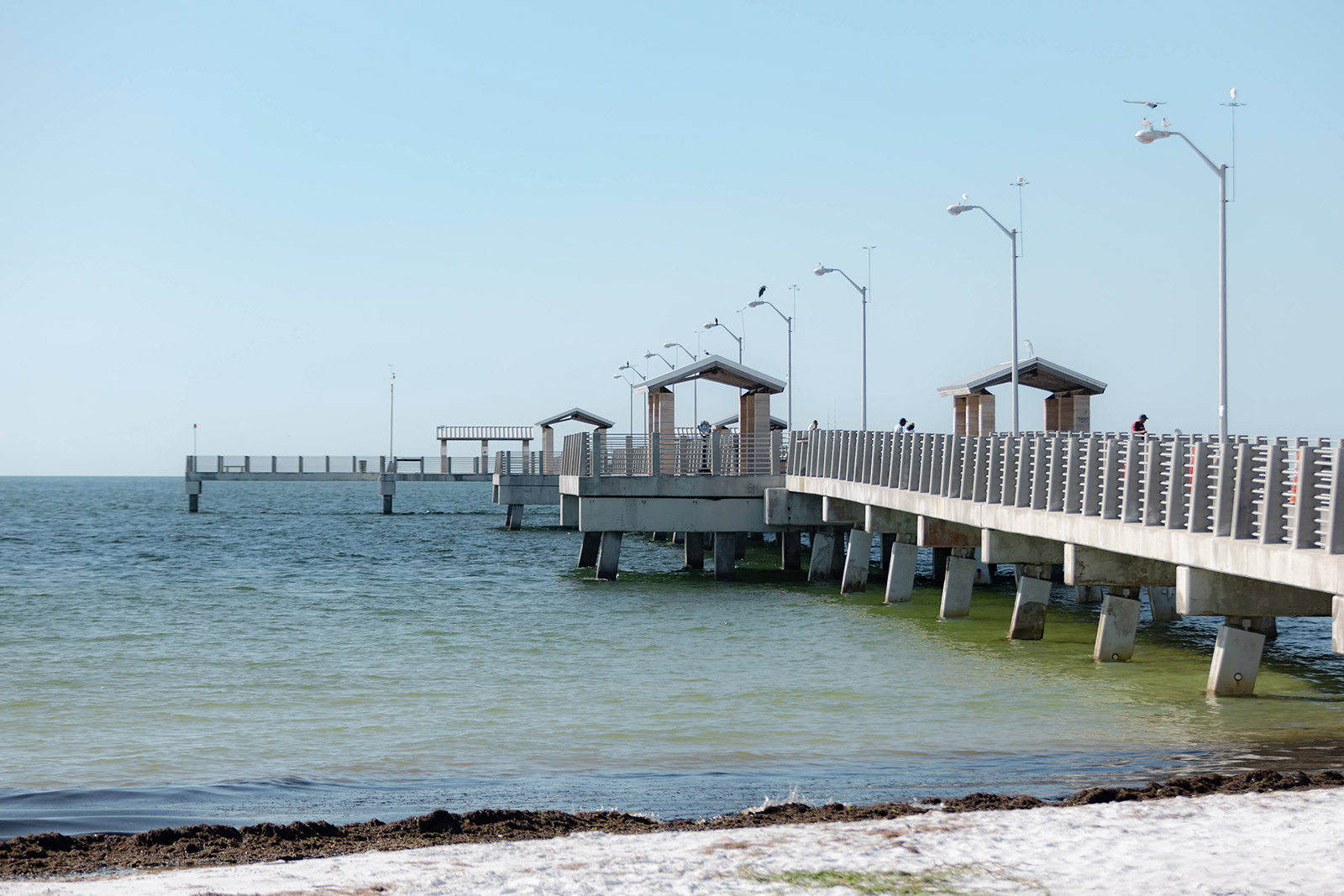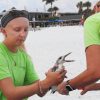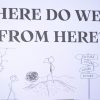They stand on shorelines, lean over bridge railings, and sometimes you’ll see them shoulder to shoulder along a municipal pier. They are people who fish at public places around Tampa Bay.
But who are they? Are they fishing for fun or because they’re hungry? How much do they interact with one another? And what’s the effect of more and more of their fishing spots being placed off-limits?
Two Eckerd College faculty members—Noëlle Boucquey, Ph.D., associate professor of environmental studies, and Jessie Fly, Ph.D., assistant professor of anthropology—began to seek answers several years ago. From 2018 to 2019 and again earlier this year, Boucquey and Fly and their team of about 24 Eckerd students and research assistants got more than 300 fishers from around Tampa Bay to fill out a survey about who they are, what they do and why.
The team also used historical newspaper analysis, mining newspaper articles as far back as 1900.
Their findings, in a research article titled “Contested Commoning: Urban Fishing Spaces and Community Wellbeing,” were published last month in the International Journal of the Commons, which is described as “an interdisciplinary peer-reviewed open-access journal, dedicated to furthering the understanding of institutions for use and management of resources that are (or could be) enjoyed collectively.”
Admitted novice fishers, Fly and Boucquey’s collaboration began as a happy accident. “Noëlle and I both studied fishing before we got to St. Petersburg, and both of us were independently interested and intrigued by fishers we saw along the sides of the road and on piers and bridges, and we wondered who they were and what their story was,” Fly explains. “Both of us started having classes of ours doing a little research with fishers. I was chair of the Institutional Review Board, and a proposal of Noëlle’s came through in 2016 for her Fisheries Governance class. That’s when we realized we were both having our classes do the same thing.”
Much of their research has to do with “commoning,” a term Boucquey says “gets at the process of people coming together for some kind of common activity—in this case, fishing. What kind of relationships are necessary to create community, positive human-environment relationships? How do these relationships form?”
“Social scientists have found that when communities of people feel connected to each other,” Fly adds, “they generate rules among themselves to take care of their resources, and even each other. So Noëlle and I were really interested in seeing if that sort of thing is happening here on these bridges, piers and sides of roads.”
It’s fragmented, at best, Fly says. “When we talk to the people on the piers and bridges, they’re always kind of pointing their finger at some other group of people. ‘Who is that not following the rules?’ ‘Who is that taking too many fish?’ ‘Who’s making a mess?’ They actually identify groups of people who are messy or say, ‘They’ll eat anything’ or ‘They don’t speak English so they don’t understand.’”
The team’s biggest area of concern is enclosure—a steady shrinking of the areas accessible to public fishing. “We started seeing how bridges and piers that used to be open to fishing were being closed, and that included the Courtney Campbell Causeway, where they completely disallowed fishing around 2013 to 2014,” Boucquey says. “And there have been more local ordinances that banned fishing from the little bridges in the neighborhoods.”
Restricting access to fishing, the researchers say, could make it more difficult for some people to find enough to eat. “We had no idea to what extent people were relying on fishery resources,” Boucquey says. “We had a question on our survey about food security, and we found about 20% of the folks we surveyed were food insecure. There are multiple reasons people go out fishing. The socializing, the fun, and that’s all part of commoning. And then there are people who really need that fish protein that they’re getting from fishing. That emphasizes the importance of keeping fishing spaces open.”
“A huge number of people who catch the fish say they take it back home to their families or neighbors and feed people,” adds Fly, who spent more than 10 years on the coast of Vietnam studying food security. “When I first arrived in the Tampa Bay area, I was driving around and saw all these folks fishing off the side of the road. My first thought was food security. How many of these people had to be fishing to survive?”
To make access to public fishing areas easier, Boucquey and Fly suggest signage that is in several languages, reduced or free admission to piers, and bus routes that include stops at popular fishing spots. And they say their research will continue.
“Their work is amazing,” says Caitlin Mongon, a senior anthropology student from St. Augustine, Florida, who is a Ford Scholar. Caitlin was invited to join the project by Fly, her mentor. Caitlin and her research partner interviewed more than 70 fishers last summer, mostly at the Sunshine Skyway and Fort De Soto fishing piers.
That research led to her studying online fishing chat rooms and websites, where, she says, women who fish are often disparaged. “But it’s totally different out on the pier,” she says. “There, you don’t have a screen to hide behind.”
“When you’re out there on a pier and hear these people’s stories, you can learn so much,” Caitlin adds. “It’s a very valuable experience for an undergraduate. I knew nothing about fishing, but I met a Vietnamese grandmother who taught me how to cook fish, how to can it and preserve it.”













